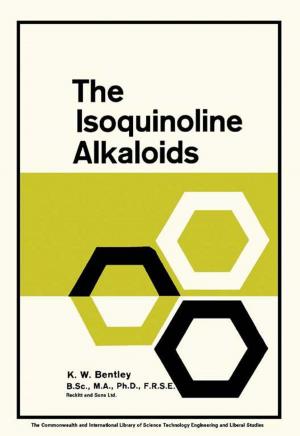Dehydroacetic Acid and Its Derivatives
Useful Synthons in Organic Synthesis
Nonfiction, Science & Nature, Science, Chemistry, Organic, General Chemistry| Author: | ISBN: | 9780081019276 | |
| Publisher: | Elsevier Science | Publication: | March 31, 2017 |
| Imprint: | Elsevier | Language: | English |
| Author: | |
| ISBN: | 9780081019276 |
| Publisher: | Elsevier Science |
| Publication: | March 31, 2017 |
| Imprint: | Elsevier |
| Language: | English |
Dehydroacetic Acid and Its Derivatives: Useful Synthons in Organic Synthesis outlines the use of DHA and its derivatives for the synthesis of pharmacologically active heterocyclic compounds. Beginning with an introduction to the chemistry and reactivity of Dehydroacetic Acid, the book goes on to outline the key ring transformation reactions of DHA. The synthesis of various derivatives is then discussed, before a wide range of metal complexes of DHA are explored in detail. The book then concludes with a review of DHA’s biological importance and its impressive range of pharmacological activities, including anti-cancer, anti-bacterial, anti-fungal and analgesic properties.
For those researching the synthesis of bioactive heterocyclic compounds, this book is a valuable guide on the fundamental knowledge needed to facilitate and enhance the successful synthesis of lead molecules.
- Gives detailed information on the underlying chemistry of Dehydroacetic acid and its derivatives
- Highlights different approaches for the synthesis of derivatives, including metal complexes
- Explores the biological importance of Dehydroacetic Acid
Dehydroacetic Acid and Its Derivatives: Useful Synthons in Organic Synthesis outlines the use of DHA and its derivatives for the synthesis of pharmacologically active heterocyclic compounds. Beginning with an introduction to the chemistry and reactivity of Dehydroacetic Acid, the book goes on to outline the key ring transformation reactions of DHA. The synthesis of various derivatives is then discussed, before a wide range of metal complexes of DHA are explored in detail. The book then concludes with a review of DHA’s biological importance and its impressive range of pharmacological activities, including anti-cancer, anti-bacterial, anti-fungal and analgesic properties.
For those researching the synthesis of bioactive heterocyclic compounds, this book is a valuable guide on the fundamental knowledge needed to facilitate and enhance the successful synthesis of lead molecules.
- Gives detailed information on the underlying chemistry of Dehydroacetic acid and its derivatives
- Highlights different approaches for the synthesis of derivatives, including metal complexes
- Explores the biological importance of Dehydroacetic Acid















